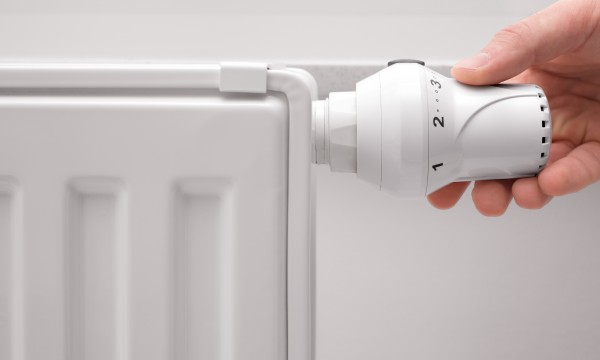Before the onslaught of winter, it's important to ensure your hot water heating system is ready. If you have radiators that usually means bleeding the system of unwanted air, which tends to reduce the efficiency. Here are the four steps to properly bleed a radiator.
- Browse Categories
- All Tips
-
Home & Garden
- All
- Appliances
- Bathroom
- Cleaning
- Crafts
- Decorating
- Electrical
- Flooring
- Furniture
- Garage Door
- Gardening
- Green Living
- Heating
- Home Alarm Systems
- Home Maintenance
- Home Remedies
- Home Security
- Home Staging
- House Sitting
- Junk Removal
- Kitchen
- Lawn Care
- Lock Systems
- Moving
- Outdoor Living
- Pest Control
- Plumbing
- Renovation
- Roofing
- Snow Removal
- Storage
- Tools
- Tree Service
- Health
- Family
- Travel
- Auto
- More Tips

4 steps to bleeding a hot water radiator
December 12, 2016

A hot water radiator system is an effective and generally low-maintenance way to provide warmth and comfort in your home. Bleeding (or releasing) unwanted air from a radiator can increase the overall efficiency of your hot water heating system. Here are four quick and easy steps for determining if your radiator needs bleeding and how to perform the task.
Time: Minimal
Frequency: Annually or as needed
Difficulty: Easy
Tools: Radiator key or flat-edged screwdriver; container or rag to catch water
Step 1: Check if your radiator needs bleeding
First, turn on the boiler to heat up all the radiators in your house.
- If there are individual temperature controls on each radiator, you may need to turn them up so that the radiators get hot.
- If there is a central thermostat to control the temperature, turn it up.
After the heat has been on for about an hour or two:
- Check each radiator individually to make sure they all have even heat. (Be careful when touching the hot radiator surface as it may scald your skin.)
- Air bubbles can congregate inside the radiator near the top, making it feel cooler than the rest of the radiator.
- If a radiator is not evenly warm, it’s time to bleed it.
Watch out!
Before proceeding to bleed your radiators, switch off the heating system. You’ll be removing some of the water, and a radiator that is receiving hot water through the pipes could burn you in the bleeding process.
- In addition, the hot water pipes may be under pressure and they could spray hot water everywhere.
Step 2: Bleed the radiator
Now that you know which radiators require bleeding, you’re good to go. Always start bleeding the radiators in the lowest levels of your house, such as your basement, working your way up to the main and second floor if you have one.
- First, locate the release valve. It’s usually located near the top of the radiator at one end.
- Use the radiator key that came with the hot water radiator – a spare can be purchased from most hardware stores if yours has been lost. Otherwise, a flat-head screwdriver should also do the trick.
- Hold a rag, cloth or small container under the valve to catch any released water.
- Slowly turn the valve counter clockwise. You will hear a hissing noise as the air escapes.
- Once all the air is released, water will come out.
Watch Out!
Water out of the hot water radiator may be hot enough to scald, even with the heating system turned off. The water may also be dirty and could stain carpets.
- Always be prepared with a rag or container to catch runoff as it escapes.
Step 3: Close valve and check boiler pressure
Once the water flows without evidence of air bubbles:
- Quickly close the valve by turning it clockwise.
- Inspect for leaks to make sure the valve is securely closed.
- Check the pressure on the boiler to ensure it’s at the recommended level after bleeding the radiators. Most residential hot water heating systems should have a recommended pressure of 12-15 PSI (pounds per square inch).
- If the pressure in your boiler is less than the recommended PSI, top it up with water if you can, or call a plumbing professional for help.
Step 4: Turn the heat back on
Once you’re satisfied that the boiler pressure is at the recommended level:
- Turn the boiler back on, as explained in Step 1 above.
- Check each individual hot water radiator to ensure heat is evenly distributed (including at the top of the radiator).
- If the heat produced by your radiator is uniform from top to bottom, then there are no more air bubbles in the system.
All radiators need bleeding on a regular basis – annually is usually recommended – as the process of heating and cooling naturally releases air into the water. Make a habit of checking your hot water radiators at the beginning of each heating season to keep your home warm and comfy and your heating system running efficiently.






